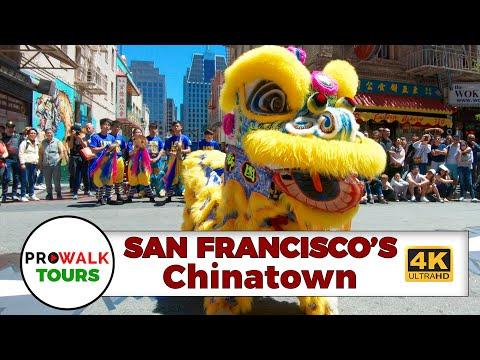As I set foot in San Francisco’s Chinatown, the air was thick with a mix of the familiar scents of incense, roasted duck, and freshly baked fortune cookies. This vibrant neighborhood, one of the oldest and largest Chinatowns in the United States, was bustling with life. I decided to embark on a walking tour, hoping to uncover the stories and secrets hidden within its narrow streets and alleys. The tour promised to be an immersive journey through culture, history, and culinary delights, and I was eager to experience it all.
The starting point was a modest, intricately decorated gate known as the Dragon Gate, which marked the entrance to Chinatown. Its golden dragons and vibrant red pillars seemed to welcome us into a different world, a stark contrast to the modern cityscape beyond. As I walked under the archway, I felt a palpable shift in atmosphere. The energy was different here—more rhythmic and animated. The street was lined with shops, their windows displaying everything from exotic teas and herbs to colorful silk garments.
Our guide, a friendly woman named Mei, began the tour by pointing out a historical marker on the side of a building. She explained that this was once the site of a Chinese herbal medicine shop established in the early 1900s. The shop had been run by a healer named Dr. Wong, who was known for his remedies and treatments. Mei’s stories brought the old shop to life, and I could almost imagine the scene—customers haggling over dried ginseng and fragrant jujube fruits.
We continued down Grant Avenue, the main thoroughfare of Chinatown. Mei led us into a narrow alleyway adorned with red lanterns and intricate murals depicting traditional Chinese myths. The alley was named Ross Alley, and it was home to the famous Golden Gate Fortune Cookie Factory. The scent of freshly baked cookies wafted through the air, drawing us in. Inside, the small factory buzzed with activity. I watched in awe as workers deftly folded warm fortune cookies and slipped tiny fortunes into them. The simple pleasure of tasting a freshly made fortune cookie, crisp and still warm, was a highlight of the tour.
Next, we ventured to the heart of Chinatown’s cultural hub, the Chinese Historical Society of America Museum. The building itself was an architectural marvel, with its ornate facades and intricate carvings. Inside, the museum showcased exhibits detailing the experiences of Chinese immigrants in America. One display featured a collection of old photographs, letters, and artifacts from the early days of Chinatown. I found myself captivated by the stories of resilience and perseverance—tales of immigrants who had built a new life far from their homeland, creating a community in the process.
Our walk took us past St. Mary’s Square, a peaceful green space surrounded by the tall, imposing buildings of Chinatown. In the square, Mei pointed out the Chinatown Memorial, dedicated to the Chinese American soldiers who served in World War II. The memorial’s solemn statues and engraved plaques were a poignant reminder of the sacrifices made by members of the community.
As the sun began to set, we arrived at a small, family-run restaurant known for its dim sum. The place was bustling with locals and tourists alike, all eager to sample the delectable treats. We were greeted with a selection of steaming dumplings, buns, and spring rolls. Each bite was a burst of flavor, from the savory pork dumplings to the delicate shrimp dumplings. I savored every morsel, knowing that this was an authentic culinary experience that connected me to the heart of Chinatown’s food culture.
After our meal, Mei guided us to the Chinatown alleys where the evening atmosphere was enchanting. The streets were illuminated by neon signs and lanterns, casting a warm glow over the storefronts. We passed by the old herbalist shops and tea houses, their windows now dimly lit but still brimming with character. Mei shared stories of the local festivals and traditions, painting a vivid picture of the cultural celebrations that took place throughout the year.
Our final stop was the Tin How Temple, the oldest Chinese temple in San Francisco. As we entered the temple, I was struck by the serene ambiance and the rich, intricate decorations. The smell of incense was strong, and the sound of soft chanting created a calming effect. The temple’s ornate altars and vibrant murals depicted various deities and scenes from Chinese mythology. It was a place of spiritual significance and cultural heritage, offering a quiet respite from the bustling streets outside.
As the tour came to an end, I felt a deep appreciation for the rich tapestry of history and culture that Chinatown embodied. Walking through its streets, I had encountered a world where past and present converged, where every corner told a story, and where every flavor and sight was a testament to the enduring spirit of a community. Leaving Chinatown, I carried with me not just the memory of a day well spent but also a profound respect for the heritage and resilience of the people who had shaped this vibrant neighborhood.
